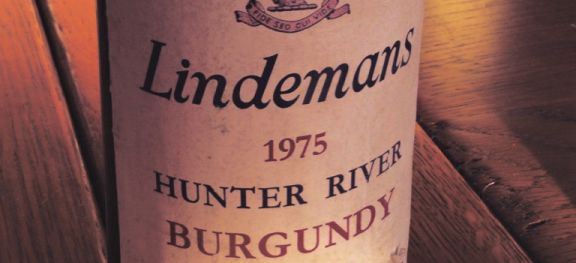2014 – Australia in review

7 April 2022 This week’s Throwback Thursday revisits the hot 2014, in counterpoint to Tuesday’s report on the cool 2022 vintage in South Australia.
1 January 2015 The year began under searing skies and finished with a classic old Hunter red. In between there were lots of g’days – and too many goodbyes. Success for a few, struggle for many. And a couple of juicy controversies.
The new normal
The 2014 vintage kicked off in record-breaking heat, which diminished an already low (but generally good quality) crop in vineyards across southeastern Australia. And the year ended in similar fashion: spring temperatures topped 40 °C in the Hunter and bushfires damaged some vineyards in central Victoria and South Australia’s Eden Valley before Christmas.
The thing is, none of this is unusual any more. As the Australian Wine Research Institute emphasised when it started on its marathon national climate change roadshow this year (workshops will be held in more than 30 regions over the next 18 months), warmer growing seasons, earlier harvests and increased extreme weather events are the new normal for Australia’s winegrowers.
Mergers and acquisitions
Beleaguered Treasury Wine Estates (owners of such prestigious brands as Penfolds, Wolf Blass, Lindemans, et al) under new CEO Michael Clarke, fended off a massive profit write-down, aggressive takeover bids and unpopular ‘efficiency gains’ such as closing the large Rosemount/Ryecroft winery in McLaren Vale. The smart money reckons Clarke is hanging on for someone to make him the right offer for one or more of those prestigious brands and then we’ll see the Treasury portfolio split up.
In other big-company news, Riverina-based Casella Wines (makers of Yellow Tail) bought Barossa-based Peter Lehmann Wines from Donald Hess’s wine group, and Accolade Wines (Hardys, etc) acquired their own large Barossa brand, Grant Burge. At the other end of the scale, two of Australia’s finest pioneering small vineyards – Main Ridge Estate on Victoria’s Mornington Peninsula and Ashton Hills in South Australia’s Adelaide Hills – were put on the market. In both cases, the next generation weren’t interested in taking over, so the founders have decided to call it a day. The end of an era.
Happy birthday
Significant anniversaries this year included the grand All Saints winery in Victoria’s Rutherglen region (150 years old), now owned by the Brown family (of nearby Brown Brothers) who celebrated by releasing an ancient commemorative fortified Muscadelle for Au$1,000 a bottle. St Hallett winery in the Barossa (now part of the Lion Nathan Wine Group) celebrated its 70th anniversary. And the irrepressible Wolf Blass reminded everyone in this, his 80th year, what a colourful and influential life he’s led.
Controversies
Natural wine continued to be increasingly popular in Australia in 2014 – but not everyone was happy about it. On the one hand we saw the enormous success (13,000 visitors across two days) of the Rootstock wine festival in Sydney, and sommeliers across the country (especially in the burgeoning ‘cave à manger’-style wine-bar scene) embracing the trend. On the other hand we had older members of the wine establishment grumbling about all the obscure hipster wines dominating restaurant wine lists. The Twitter war of words that ensued was most entertaining.
As was the furore when Wine Australia, the statutory body responsible for label integrity, issued a warning to ‘natural’ winemakers about the use of the word ‘orange’ in relation to skin-contact white wines. There was potential, said the authority sternly, for consumers to confuse the trendy wine style with wines from the New South Wales region of Orange. We all had fun with that one, too.
Much more serious was the scandal of an independent auditor’s report being doctored by the environment committee chair of the Winemakers Federation of Australia. Despite an independent inquiry, there are still many unresolved issues and unanswered questions. WFA has lost considerable credibility among its winemaking constituents over this.
And there was bad news in March for the small but growing band of Australian winemakers interested in the newly revived fortunes of the Carignan grape. DNA testing showed that almost all the vines in Australian vineyards previously thought to be Carignan are in fact Bonvedro (Somontano’s Parraleta) or a rare clone of Mataro/Mourvèdre. Bugger. Back to the drawing board.
Farewell
We lost some good people this year, including veteran wine merchant Doug Crittenden (the first to recognize the potential of Orlando’s cool-fermented Riesling in the 1950s); legendary Hunter winemaker Gerry Sissingh; Barossa’s celebrated winemaker Doug Lehmann, son of Peter; irreverent emerging wine writer Jeremy Pringle; and Wine Australia’s tireless champion in the UK, Yvonne May.
History repeats
This year has been full of déjà vu. This year has been full of déjà vu.
Winemaker Steve Pannell (see Australia at the crossroads?) first won the Jimmy Watson – Australia’s most famous wine show trophy – with a full-bodied Shiraz back in 1996 when he was the Wunderkind at Hardys. This year he won it again, with a medium-bodied 2013 Adelaide Hills Syrah (sic) under his own label, SC Pannell – and also moved into his own winery and cellar door in McLaren Vale after years renting space in other people’s cellars. It’s a neat illustration of the shift in emphasis between the 1990s and now for many in the Australian wine industry – from big to small, from warm to cool, from power to elegance.
Déjà vu, too, in the Adelaide Hills, where Petaluma founder Brian Croser has taken back the original Petaluma winery for his own Tapanappa label (the Petaluma brand, which Croser sold to Lion over a decade ago, has moved into new premises up the road) and old lieutenant, Con Moshos, has returned to the Croser fold after a long stint at Mountadam.
And in the Barossa, after a multi-million-dollar cellar-door refurbishment – including the installation of an outpost of the great McLaren Vale restaurant Fino – the 163-year-old Seppeltsfield estate edges closer to becoming one of Australia’s – the world’s – wine showpieces, just as it was in the 19th century. Make no mistake: managing director Warren Randall is building an empire here.
Talking of back to the future: gong for wine launch of the year has to go to Jacob’s Creek/Pernod Ricard for their revival of Barossa Pearl – complete with original kitschy label and distinctive skittle bottle – the classic sweet sparkling that turned a whole generation of Australians away from ‘sherry’ and ‘port’ in the 1950s and ‘60s.
Wines of the year: tastes of the present, the future and the past
My most memorable tasting of current-release wines was the 2012 Wendouree Clare Valley reds. From arguably the greatest single vineyard in Australia and from undoubtedly one of the best vintages in recent years, these are deeply characterful, intensely flavoured, impeccably balanced and impossibly long-lived reds. And (if you’re lucky enough to be on the mailing list) they are criminally underpriced; I felt almost guilty paying just Au$50 a bottle for Cabernet Sauvignons and Malbecs that are the equal of any from anywhere else in the world.
Most exciting taste of the future came in the form of a mouthful of 2014 Assyrtiko – the first example of this grape grown in Australia (see importing vines into Australia). It was the first crop of vines planted by the Barry family in Clare, and just 20 litres were made this year. I’ve been following the story since Peter Barry told me he was thinking about importing the variety back in 2007, and it was a thrill to see the dream become reality. The wine tasted like a particularly dense and structured Clare Riesling – similar, but tantalisingly different.
And, as I say, the year finished on a high when my father-in-law gave me free rein in his cellar over Christmas. Among other gems, one of the standouts for me was a bottle of 1975 Lindemans Hunter River Burgundy, a great example of regional Shiraz that tasted of concentrated damson juice, chewed up sticks and bark, and cold camp fires.
And from memory, it was from a hot, bushfire vintage.
Become a member to view this article and thousands more!
- 15,432 featured articles
- 274,123 wine reviews
- Maps from The World Atlas of Wine, 8th edition (RRP £50)
- The Oxford Companion to Wine, 5th edition (RRP £50)
- Members’ forum
- 15,432 featured articles
- 274,123 wine reviews
- Maps from The World Atlas of Wine, 8th edition (RRP £50)
- The Oxford Companion to Wine, 5th edition (RRP £50)
- Members’ forum
- Commercial use of our Tasting Notes
